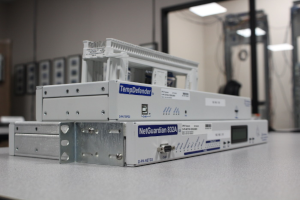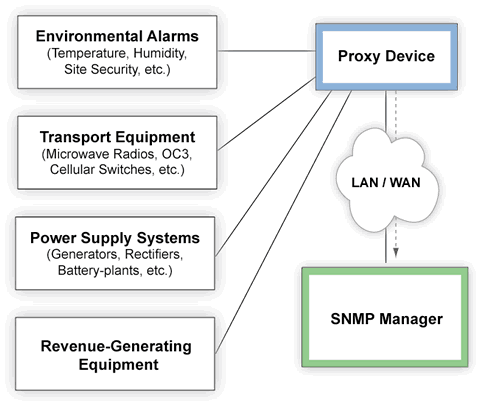Some of your most crucial network gear is not built for SNMP.
This guide to will show you the 5 features to look out for when evaluating an SNMP proxy device.
1-800-693-0351
Have a specific question? Ask our team of expert engineers and get a specific answer!
Sign up for the next DPS Factory Training!

Whether you're new to our equipment or you've used it for years, DPS factory training is the best way to get more from your monitoring.
Reserve Your Seat TodaySNMP is great for integrating classic telecom telemetry with modern IP-based network management, because it's an open-standard protocol that's flexible enough to describe almost anything.
The one hitch is, some of your most crucial network infrastructure is not built for SNMP. To integrate your infrastructure elements into your SNMP alarm management, you need to install SNMP proxy devices at your remote sites.
There are a few essential features you must keep in mind when evaluating SNMP proxy equipment.
SNMP is great for integrating classic telecom telemetry with modern IP-based network management, because it's an open-standard protocol that's flexible enough to describe almost anything.
The one hitch is, some of your most crucial network infrastructure is not built for SNMP. The reliability of a telecom network ultimately rests on some pretty humble low-tech equipment: battery plants, diesel generators, and high temperature, intrusion, and humidity alarms.
It is absolutely essential to have visibility of these critical network elements. If any one of them fails, it can bring your whole network down.
To integrate your infrastructure elements into your SNMP alarm management, you need to install SNMP proxy devices at your remote sites. A proxy device is a smart RTU that combines the functions of alarm collection and protocol mediation. It accepts standard telemetry alarm inputs like contact closures and analog signals and encodes the data in an SNMP trap.
How do you select the right proxy device for your network? There are a few essential features you must keep in mind when evaluating SNMP proxy equipment:
